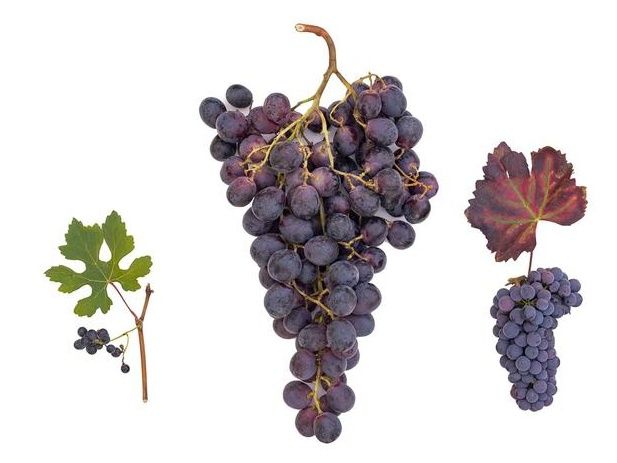Genomics: the cradle and path of wine
Advertisement
The breeding and cultivation of grapevines has had a strong influence on the emergence of European civilizations, but where the vine originated and how it spread has remained controversial. In a comprehensive genome project, researchers at China's Yunnan Agricultural University clarified the origin and path of wine from wild grapevine to today's cultivated form with the help of thousands of grapevine genomes collected and analyzed along the Silk Road from China to Western Europe. The wild grapevine collection of the Karlsruhe Institute of Technology (KIT) played an important role here. The researchers published their results in Science.
The grapevine is one of the oldest cultivated plants, and wine was one of the first global trade goods that promoted the exchange of cultures, ideas, and religions. It evolved at the end of the Ice Age from the European wild grapevine, which today survives in only a few relict populations, one of which is located on the Ketsch peninsula in the Rhine floodplains between Karlsruhe and Mannheim. The trace of when and where exactly wild grapevines were domesticated, whether grapes and table grapes have the same origin and how thousands of grapevine varieties evolved, could not be traced until now. What was clear, however, was that grapevines have gone through sometimes drastic climate changes and also picked up numerous genes from Asia through early human migrations. "In fact, it has been known for several years that today's Silk Road was once a wine route. Even the Chinese character for alcohol is derived from Georgian wine jugs, so-called qevri," explains Professor Peter Nick of KIT's Joseph Gottlieb Kölreuter Institute for Plant Sciences (JKIP). Nick, who had previously worked with Chinese researchers on a project to elucidate grapevine genomes, proposed collecting grapevines along the former Silk Road and analyzing their genomes.

Grapevines (from left: grapes of the wild vine, table grapes and wine grapes) have accompanied civilization for thousands of years. A genome project clarified the origin and path of wine.
Karlheinz Knoch, KIT
Most detailed model of grapevine evolution and domestication to date.
This idea gave rise to a network of researchers from 16 countries, who contributed not only numerous wild grapevines and old cultivars from their region, but also knowledge of their origin and history. Under sometimes, in view of the world political situation, most difficult circumstances, the DNA of more than 3,500 vines, including more than 1,000 wild forms, could be sent to the State Key Laboratory for Conservation and Utilization of Bio-Resources at Yunnan Agricultural University, where the genomes were deciphered under the leadership of Dr. Wei Chen and assembled into the most detailed model of the evolution and domestication of grapevine to date. This comprehensive picture is yielding many new insights. The origins of grapevine cultivation can now be dated to over 11,000 years before Christ, in the South Caucasus. The new technology spread very quickly westward across the Mediterranean, and crosses with local wild grapevines quickly created a great diversity of grape varieties, which could also be maintained through the practice of propagation via cuttings. Table grapevines developed from particularly large-berried varieties in the Middle East about 7,000 years ago. Domestication coincided with climatic changes, especially the end of the Ice Age, but also the warm and humid Atlantic, a climatic period between 8 000 and 4 000 BC. The resulting human migrations directly left traces in the genome of grapevines - for example, genes originating from grapevines in Azerbaijan and Central Asia are found in medieval grapevines in southwestern Germany.
KIT Wild Grapevine Collection Contributes to the Elucidation of Grapevine Evolution
KIT not only contributed the original idea for this genome project, but also its globally unique collection of European wild grapevine, as well as very old medieval varieties that had been considered extinct until a few years ago. "The search for the different vines was highly exciting," says Nick. "For example, many vines came from the excellent collection at Magarach in the Crimea. The Ukrainian researchers had fled after the Russian annexation in 2014 and were now scattered, along with vines, all over the world." The Karlsruhe biologist tracked them down on Russian-language social networks and put them in touch with the Chinese research team. The genome project not only clarifies the grapevine's past, but also points to the future, Nick says: "We've not only captured the entire biodiversity of this species, but also have all the genetic information available to use in a targeted way." Currently, genes for climate resilience from wild grapevines are being crossed into cultivated grapevines in the Interreg Upper Rhine project KliWiReSSe to arm viticulture in the region against the consequences of climate change. (rli)
Note: This article has been translated using a computer system without human intervention. LUMITOS offers these automatic translations to present a wider range of current news. Since this article has been translated with automatic translation, it is possible that it contains errors in vocabulary, syntax or grammar. The original article in German can be found here.




























































